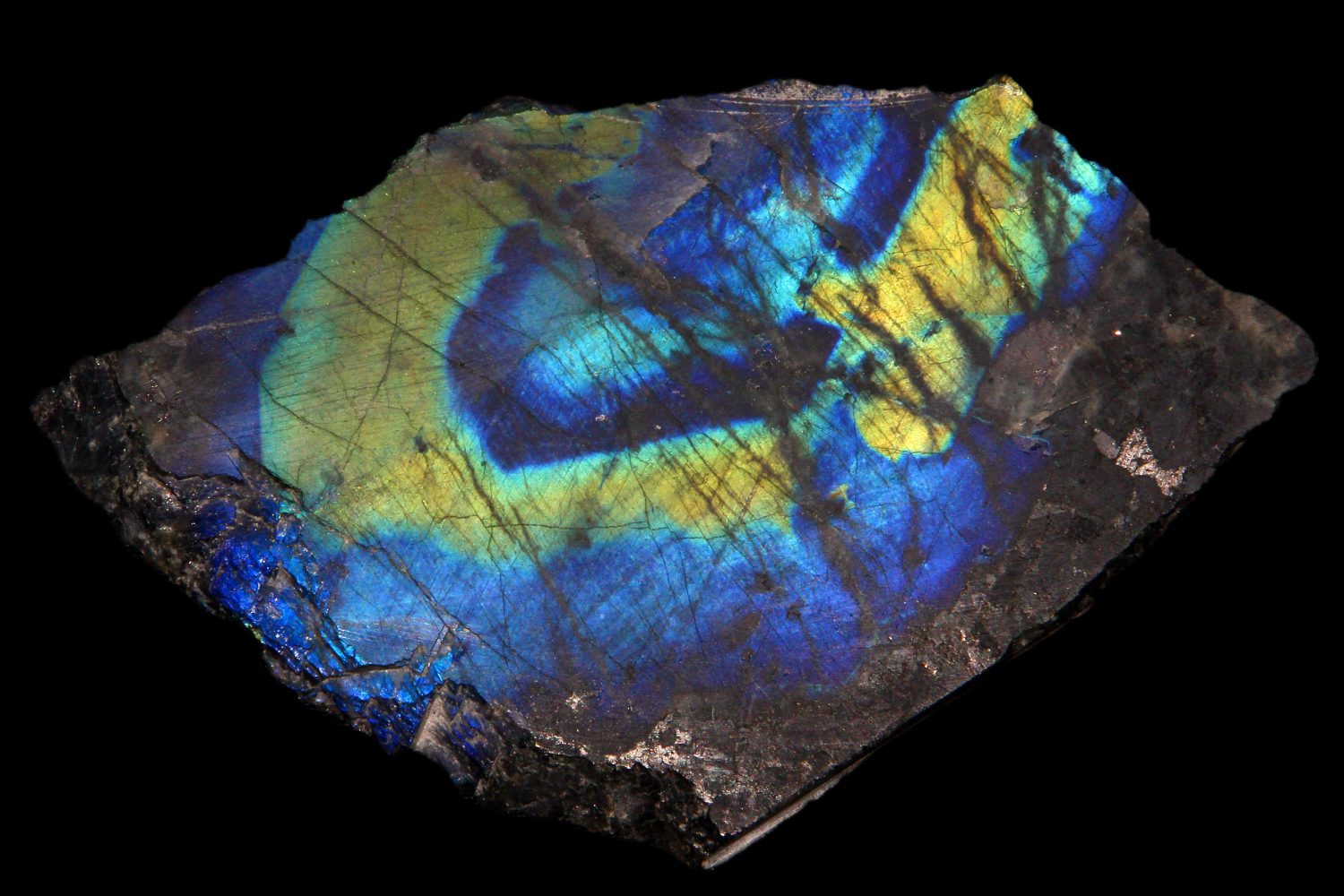Unless you study rocks for a living, plagioclase is probably not a mineral you bring up too much in everyday conversation. Nonetheless, it is one of the most important rock-forming minerals and is very abundant in the Earth’s crust. The white color you see in intrusive igneous rocks such as granite or diorite is likely plagioclase, so there is a good chance your countertop contains significant amounts of this mineral.
Plagioclase is not one mineral; rather, it is the name given to several minerals with related chemical formulas. The individual members of the plagioclase series differ based on the amount of sodium and calcium present in their chemical composition. Albite is the plagioclase member with the most sodium, and has the chemical formula NaAlSi3O8. Anorthite is the member with the most calcium, and has the chemical formula CaAl2Si2O8. In between these two in the series are four intermediate minerals, which have combinations of both sodium and calcium in varying ratios. It is usually very difficult to see the difference between the plagioclase members in hand samples, so geologists use more complex methods to identify the individual members of the series.
One of the more popular members of the plagioclase series among collectors is Labradorite, and it is not hard to see why. Labradorite is dark colored, and when held to a light, it displays brilliant flashes of yellows, blues, reds and greens. This stunning iridescence is a property aptly named Labradorescence. Labradorite can be polished and made into jewelry or carved into countertops fit to build a house around.
To see beautiful examples of labradorite and other plagioclase minerals in person, come visit the Dice Mineralogical Museum located on the first floor of North Hall!








